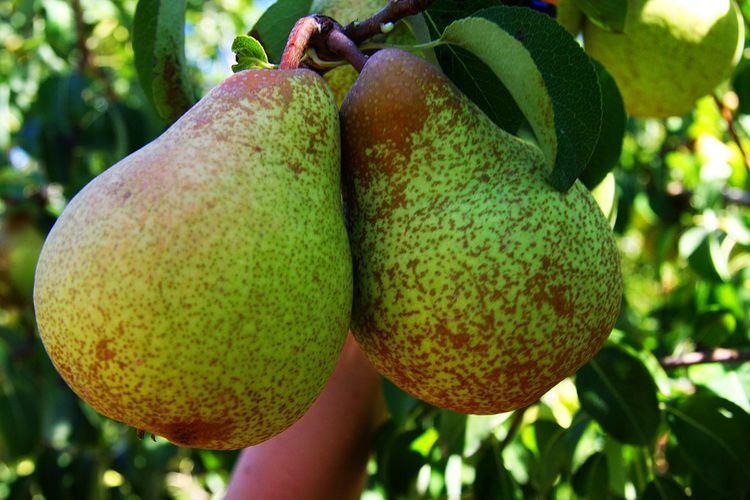Genus Pyrus Cultivar 'Rocha' | ||
 | ||
Pêra Rocha ([ˈpeɾɐ ˈʁɔʃɐ]; literally "rock pear",) is a native Portuguese variety of pear. The earliest account of the Rocha variety dates from 1836, in the Sintra municipality. This variety was casually obtained from a seed, on Pedro António Rocha's farm. The variety derives its name from his family name. The 'Rocha' pear is produced in several places in Portugal. The production area is over 100 km² and there are about 9,450 producers.
Pêra Rocha do Oeste DOP
'Rocha' Pear produced in the Oeste region of Portugal has a PDO status since 2003. It is the most renowned, being a product with specific characteristics:
Over 13,520,000 kg of Oeste’s 'Rocha' Pear was exported in 2004 to countries like Britain, Brazil, France, Ireland, Russia, Poland, the Netherlands, Canada and Spain.
